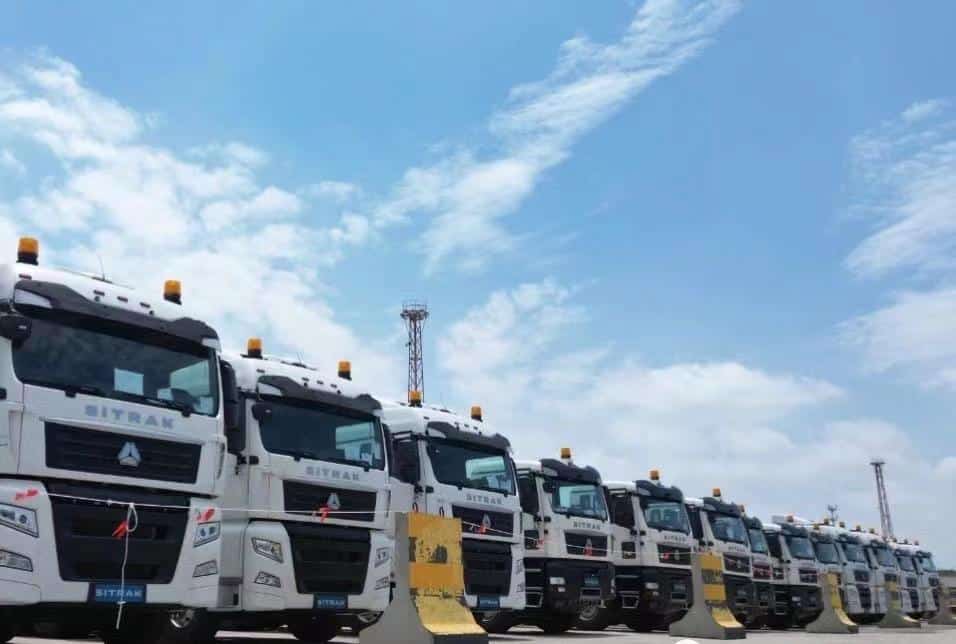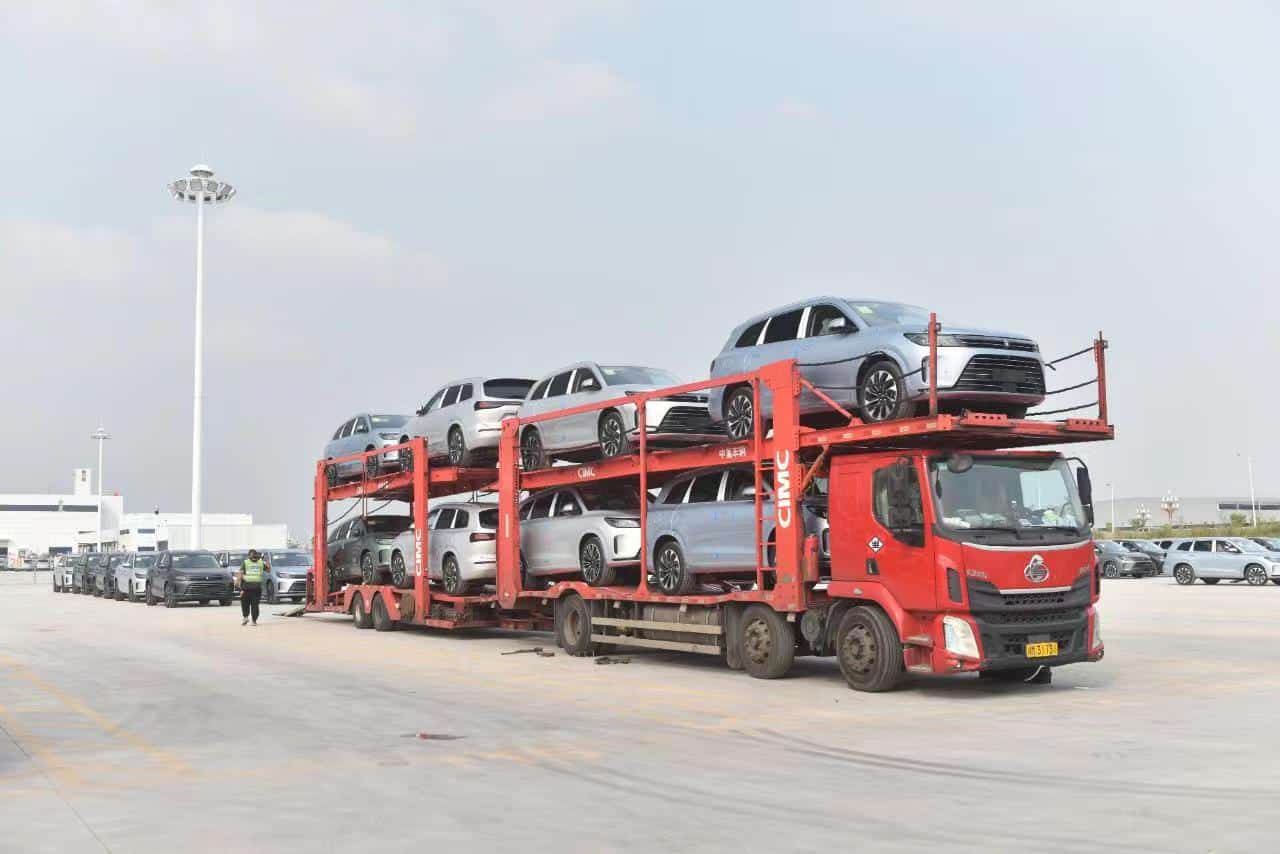Based on comparative advantages to benefit people around the world – a review of the development of new energy vehicles in China
May 1, 2024 Tina
In 2023, China exported 1.203 million new energy vehicles, an increase of 77.6% over the previous year. The export destination countries cover more than 180 countries in Europe, Asia, Oceania, America, Africa and other regions. Chinese brand new energy vehicles are deeply loved by consumers around the world and rank among the top sales in new energy vehicle markets in many countries. This demonstrates the increasing international competitiveness of China’s new energy vehicle industry and fully reflects the comparative advantages of China’s industry.
The international competitive advantage of China’s new energy automobile industry stems from more than 70 years of hard work and innovative development, and benefits from a complete industrial chain and supply chain system, large market scale advantages and sufficient market competition.
Work hard on your internal skills and gain strength through accumulation. Looking back at the development history of China’s automobile industry, the First Automobile Manufacturing Plant started construction in Changchun in 1953. In 1956, China’s first domestically produced car rolled off the assembly line at the Changchun First Automobile Manufacturing Plant. In 2009, it became the world’s largest automobile producer and seller for the first time. In 2023, automobile production and sales will exceed 30 million units. China’s automobile industry has grown from scratch, grown from small to large, and has been moving forward courageously through ups and downs. Especially in the past 10 years or so, China’s automobile industry has actively embraced the opportunities of electrification and intelligent transformation, accelerated its transformation to new energy vehicles, and achieved great results in industrial development. Remarkable results. China’s new energy vehicle production and sales have ranked first in the world for nine consecutive years. More than half of the world’s new energy vehicles are driving in China. The overall electrification technology is at the world’s leading level. There are many breakthroughs in new technologies such as new charging, efficient driving, and high-voltage charging. China Leading the world in the application of advanced autonomous driving technology.
Improve the system and optimize the ecology. China has formed a complete new energy vehicle industry system, including not only the parts production and supply network of traditional vehicles, but also the supply system of batteries, electronic controls, electric drive systems, electronic products and software for new energy vehicles, as well as charging and replacement. Supporting systems such as electricity and battery recycling. China’s new energy vehicle power battery installations account for more than 60% of the world’s total. Six power battery companies including CATL and BYD have entered the top ten in global power battery installations; key materials for power batteries such as positive electrodes, negative electrodes, separators, and electrolytes Global shipments account for more than 70%; electric drive and electronic control companies such as Verdi Power lead the world in market size; a number of software and hardware companies that develop and manufacture high-end chips and intelligent driving systems have grown; China has built a total of more than 9 million charging infrastructure There are more than 14,000 power battery recycling companies in Taiwan, ranking first in the world in terms of scale.
Equal competition, innovation and iteration. China’s new energy vehicle market has large scale and growth potential, sufficient market competition, and high consumer acceptance of new technologies, providing a good market environment for the continuous upgrading of new energy vehicle electrification and intelligent technology and the continuous improvement of product competitiveness. In 2023, China’s new energy vehicle production and sales will be 9.587 million and 9.495 million units, an increase of 35.8% and 37.9% respectively. The sales penetration rate will reach 31.6%, accounting for more than 60% of global sales; the new energy vehicles produced in my country are in the domestic market About 8.3 million vehicles were sold, accounting for more than 85%. China is the world’s largest auto market and the most open auto market in the world. Multinational auto companies and local Chinese auto companies compete on the same stage in the Chinese market, compete fairly and fully, and promote rapid and efficient iterative upgrades of product technology. At the same time, Chinese consumers have high recognition and demand for electrification and intelligent technology. Survey data from the National Information Center shows that 49.5% of new energy vehicle consumers are most concerned about electrification such as cruising range, battery characteristics and charging time when purchasing a car. Performance, 90.7% of new energy vehicle consumers said that intelligent functions such as Internet of Vehicles and smart driving are factors in their car purchase.

The vigorous development of China’s new energy automobile industry has met the needs of consumers around the world for high-quality products and services, provided strong support for the transformation of the global automobile industry, made China’s contribution to combating global climate change and promoted low-carbon development, and demonstrated China’s Take responsibility.
Export high-quality products and gain market trust. The International Energy Agency released the “Global Electric Vehicle Outlook 2024”, predicting that global demand for electric vehicles will continue to grow strongly in the next decade, reaching 17 million vehicles in 2024. China’s new energy vehicle products have and will continue to provide diversified choices for global consumers. With the advantages of electrification and intelligence, they are still popular overseas at higher prices than domestic ones. BYD’s ATTO3 model was selected as the UK’s Best Electric Car of 2023 by the British News Company, Geely’s Geometry E model is deeply loved by Rwandan consumers, and the Great Wall Haval H6 new energy model won the best powertrain award in Brazil. Spanish media “Diari de Tarragona” reported that Chinese new energy vehicles are of high quality and almost half of Spaniards would consider buying a Chinese car as their next car.
Use advanced technology exchanges to achieve win-win results in the industry. As China’s new energy vehicles go global, it also welcomes global automobile companies to actively integrate into China’s new energy vehicle industry chain, injecting strong momentum into the transformation of the global automobile industry. A number of major foreign-invested projects such as Audi FAW, Volkswagen Anhui, and Liangguang Automobile have been launched in China. Volkswagen, Mercedes-Benz, etc. have established global R&D centers in China. More and more multinational automobile companies are accelerating electrification and intelligence with the help of Chinese new energy automobile industry chain enterprises. transformation. The 2024 Beijing International Auto Show has the theme of “New Era, New Cars”. Global automobile companies have unveiled 278 new energy vehicle products, accounting for more than 80% of the number of new models on display.
Promote green development through low-carbon industrial transformation. Achieving green and low-carbon development is a common global aspiration. In 2020, China proposed at the 75th United Nations General Assembly that carbon dioxide emissions should strive to peak before 2030 and strive to achieve carbon neutrality by 2060. Carbon peaking and carbon neutrality commitments demonstrate China’s determination to address climate change and demonstrate its responsibility as a major country. In recent years, China has unswervingly fulfilled its commitments, accelerated the transformation of its industrial structure, and vigorously developed new productive forces. New energy vehicles, power batteries, photovoltaics and other industries have achieved leapfrog development, injecting new hope and making contributions to the global green and low-carbon transformation. China’s contribution. Automobile carbon emissions account for about 10% of total global carbon emissions, and the carbon emissions of new energy vehicles throughout their life cycles are more than 40% lower than traditional fuel vehicles. According to calculations by the International Energy Agency, to achieve the United Nations’ 2030 sustainable development goals, global sales of new energy vehicles need to reach approximately 45 million units in 2030. As the world’s largest new energy vehicle market, China’s new energy vehicles continue to develop rapidly, which will provide strong support for global carbon emission reduction and green and low-carbon development.
Relying on the comparative advantages of the ultra-large-scale market and the entire industry chain, China’s automobile industry has complied with the trend of automobile electrification and intelligent transformation, adhered to hard work and innovative development, and successfully opened up new areas and new tracks for development, and created new momentum and new advantages for development. China’s new energy vehicles have also achieved leapfrog development from unknown to global leadership, from meeting domestic high-quality development needs to assisting global green and low-carbon transformation.




